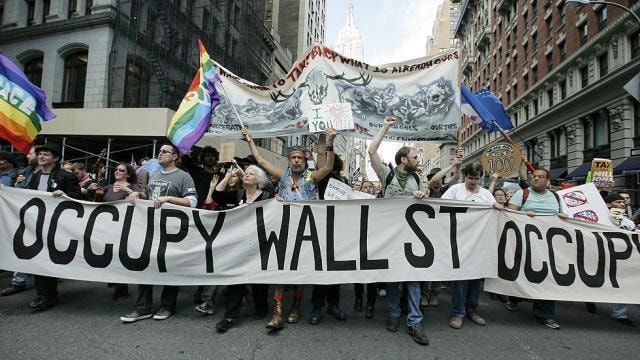Insights
Years later, financial crisis casts long public relations shadow.

This piece, authored by Clyde Group Manager Chris Lundquist, was originally published in The Hill.
According to a 2016 Gallup survey, Americans’ confidence in the banking industry has remained below 30 percent since cratering during the global financial crisis in 2008. Considering where the industry found itself following the crash, it might seem like there was nowhere to go but up. And yet, almost a decade later, public trust in financial institutions remains stubbornly low. To be fair, building trust from scratch is hard enough on its own. Rebuilding trust with someone who blames you for the worst economic disaster of their entire lives —that’s a different challenge altogether. That doesn’t mean financial services firms haven’t been trying. Comparing a handful of advertisements from before and after the onset of the financial crisis offers an insightful case study into how firms respond to an event that shifts the tectonic plates of their industry beneath them. Advertising is often the most obvious, and certainly the most visible, strategy for regaining public trust. It cuts to the core of how financial firms publically reshaped their messaging in the wake of the crisis. Here is a Geico ad from 2005. Note that the product is never mentioned. This has long been a favorite tactic of the industry: Even before the Great Recession, the industry faced an uphill battle in explaining and selling complicated, confusing and even plain boring products. A half-century ago, financial institutions — much smaller than today’s nation-spanning corporations — built success through genuine, face-to-face connections made on the ground in local communities. But it’s hard to stay local and go national. As these institutions grew in size and scope, their offerings became commoditized. Faced with a world uninterested in the technical details of their interchangeable products, each had to develop national recognition and appeal. They cultivated creative, yet arbitrary, brand identities to stand apart. Then came the recession. Consider this Fidelity Commercial from 2009, released less than a year after the financial crisis: Gone are the lighthearted tone and the gags intended to instill brand familiarity. Instead, the message is steeped in earnestness; an employee interacts directly with a consumer, demonstrates concern and commitment and ultimately establishes trust. This response, showing committed customer support, permeated the entire financial services industry, even though many firms’ connection to the meltdown was tangential at best. Indeed, some bore no responsibility for the crisis at all, but mistrust and ill will toward any company whose business touched finance was so pervasive that firms were forced to adapt their messaging regardless of whether their names were showing up in negative headlines. Another Geico ad — this time from 2009 — further illustrates this trend. While still featuring the beloved Geico Gecko, the ad also showcases the CEO speaking directly about the company’s values. And while Geico may have had nothing to apologize for, conveying transparency is key amid a climate of consumer doubt and distrust. The Great Recession so thoroughly destroyed consumer trust and confidence that it required more than cleverness in advertising to set a brand apart from a sea of identical alternatives. Instead of relying on novelty to instill brand association, the industry shifted its focus to highlight a new “product” of sorts — employees who care. Even as years have passed and the worst pain of the recession has started to fade, this kind of reputational messaging has cemented itself as an important tool of the trade across the industry. Take this 2014 advertisement from Charles Schwab, which promises customers the “Schwab Accountability Guarantee”: Many firms have gradually made zany creativity a part of their messaging approach again, but maintained the emphasis on accountability, commitment to the well-being of customers, and corporate responsibility. These themes have become an essential part of their PR arsenal. It’s difficult to say what the financial services industry can do to start nudging that low-trust statistic higher. Messaging efforts that center on a company’s ethical convictions aren’t a bad idea, of course. But as long as smoldering discontent continues to be reignited by scandals like Wells Fargo’s fraudulent opening of unsolicited accounts for customers, it’s going to be hard for the industry as a whole to progress. Time heals all wounds, as they say — but only if you don’t re-aggravate the injury in the meantime.